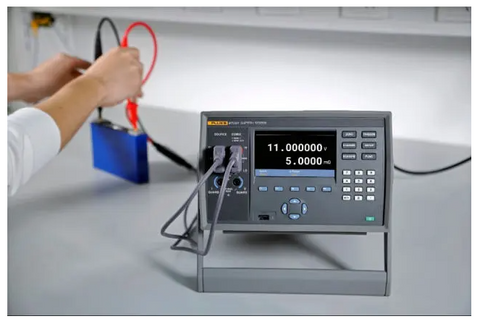DC internal resistance test method
The DC internal resistance test method given in the standard needs to give the battery a large pulse current. The accuracy of this test method is not only related to the accuracy of the charging and discharging equipment used and the detection equipment of the sensor, but also the size of the internal resistance of the battery itself. affect the error.
1. Use constant current 40A to limit voltage 4.2V to fully charge the lithium-ion battery pack
2. Use 100A current to discharge 10% DOD (DepthOfDischarge) of electricity, at this time the battery SOC is 90%
3. Stand still for 1 hour
4. Carry out a test according to the pulse power test diagram below
5. Repeat the test of (1)-(3), each time the depth of discharge is increased by 10%, until 90% of DOD is released for the final test
6. Drain the battery to 100% DOD
According to the physical formula R=U/I, the test equipment forces the lithium-ion battery to pass through a large constant DC current (generally 40A-80A at present) in a short period of time (generally 2-3 seconds), and measure this When the voltage across the lithium-ion battery, and according to the formula to calculate the current internal resistance of the lithium-ion battery pack.
The accuracy of this measurement method is high, and if it is properly controlled, the measurement accuracy error can be controlled within 0.1%.
AC voltage drop internal resistance measurement method
Because the lithium-ion battery pack is actually equivalent to an active resistance, we apply a fixed frequency and a fixed current to the lithium-ion battery (currently generally use 1kHz frequency, 50mA small current), and then sample its voltage, after rectification, After a series of processing such as filtering, the internal resistance value of the lithium-ion battery is calculated through the operational amplifier circuit. The measurement time of the lithium-ion battery by the AC voltage drop internal resistance measurement method is extremely short, generally around 100 milliseconds. The accuracy of this measurement method is also good, and the measurement accuracy error is generally between 1% and 2%.

